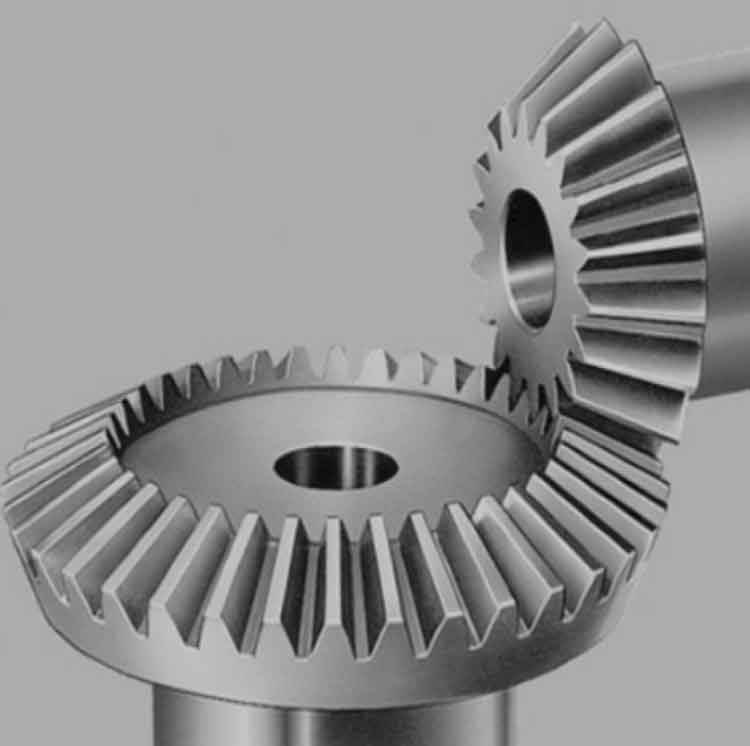
Straight bevel gears are a type of bevel gear used for power transmission between intersecting shafts. They have conical-shaped teeth and are primarily designed for applications where the input and output shafts are at right angles to each other. Here are some basics of power transmission using straight bevel gears:
Gear Tooth Profile:
Straight bevel gears have straight teeth that are cut along the generatrix of a cone. The tooth profile is typically straight and tapered, resembling the shape of a right triangle. The tooth profile allows for efficient power transfer between intersecting shafts.
Intersecting Shaft Configuration:
Straight bevel gears are specifically designed for power transmission between intersecting shafts. The input shaft and output shaft are positioned at a 90-degree angle to each other, forming a right angle.
Speed and Torque Transmission:
Similar to other types of gears, straight bevel gears transmit power by meshing their teeth. The speed and torque transmission between the input and output shafts depend on the gear ratio, which is determined by the number of teeth on each gear.
Gear Ratio:
The gear ratio of straight bevel gears is determined by the ratio of the number of teeth on the input gear (pinion) to the number of teeth on the output gear (crown gear). The gear ratio determines the relationship between the rotational speed and torque between the input and output shafts.
Efficiency:
Straight bevel gears generally have high efficiency in power transmission due to their simple and direct tooth engagement. However, efficiency can be affected by factors such as gear quality, lubrication, and misalignment.
Applications:
Straight bevel gears find applications in various industries, including automotive, aerospace, machine tools, marine, and power transmission systems. They are commonly used in different mechanical systems, such as differential drives, steering mechanisms, and right-angle gearboxes.
Advantages:
- Compact design: Straight bevel gears have a compact size, making them suitable for applications with limited space.
- Efficient power transmission: The direct tooth engagement of straight bevel gears enables efficient power transmission.
- High load-carrying capacity: Straight bevel gears can handle relatively high loads and transmit torque efficiently.
Limitations:
- Noise and vibration: Straight bevel gears can produce noise and vibration due to the nature of tooth engagement, especially at high speeds.
- Limited shaft angle: Straight bevel gears are limited to applications where the input and output shafts intersect at a 90-degree angle.
- Sensitivity to misalignment: Misalignment between the shafts can lead to increased noise, wear, and reduced gear life.
Understanding the basics of power transmission with straight bevel gears allows engineers and designers to select the appropriate gear type for applications requiring power transfer between intersecting shafts at a right angle. Careful consideration of factors such as gear ratio, efficiency, load capacity, and alignment is crucial in optimizing the performance and reliability of straight bevel gear systems.
